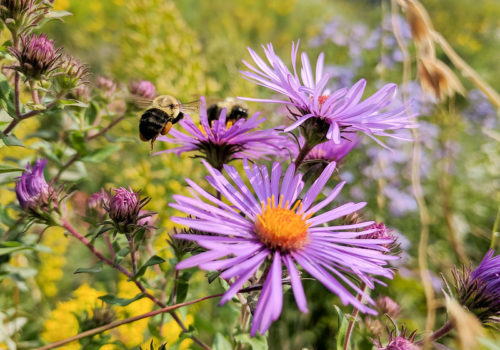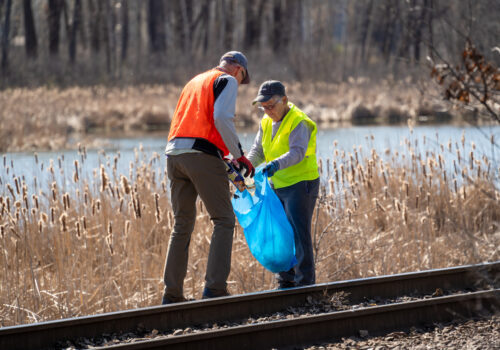News / September 29, 2016
How to Grow Trees Quickly in a Small Space
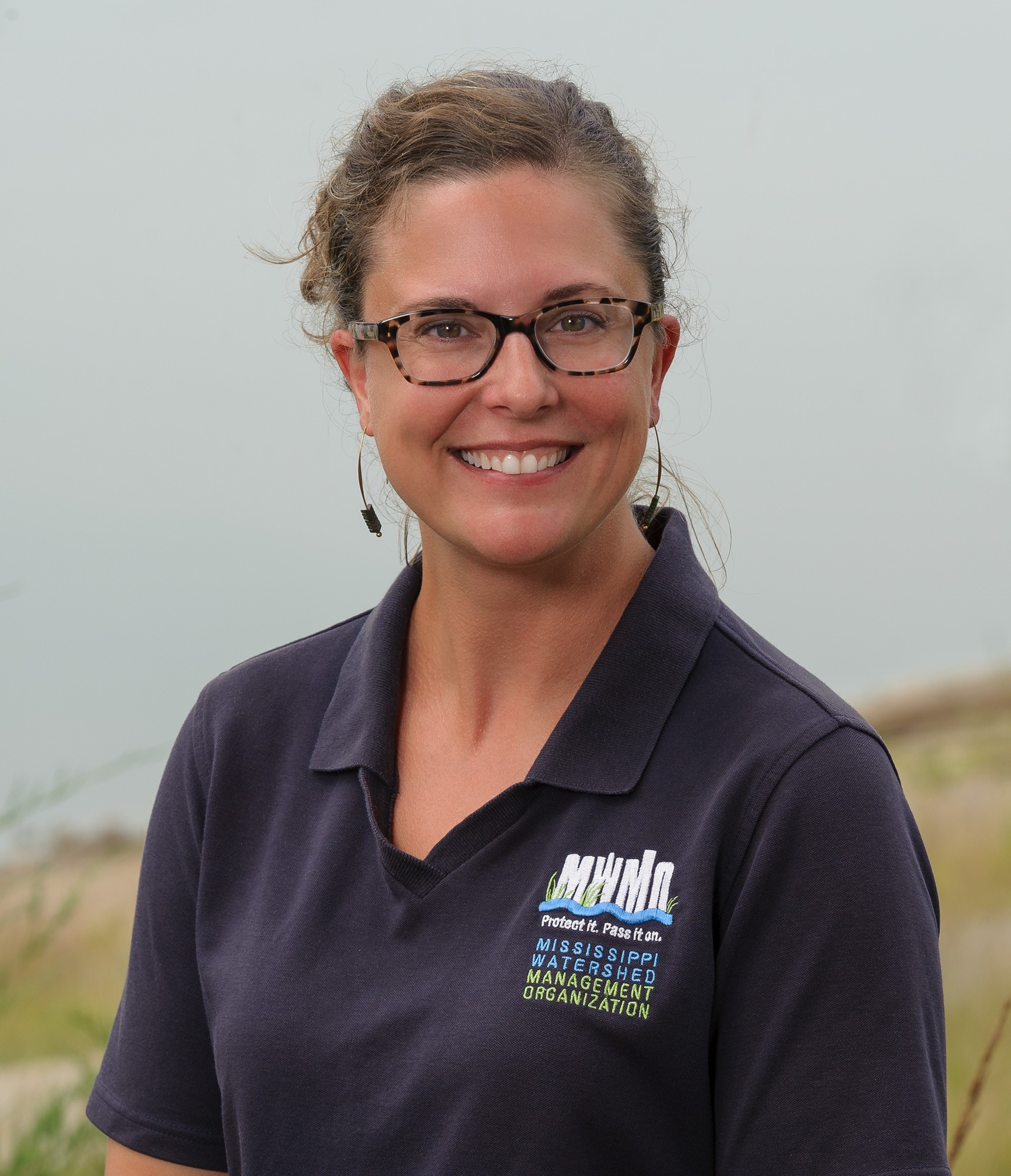
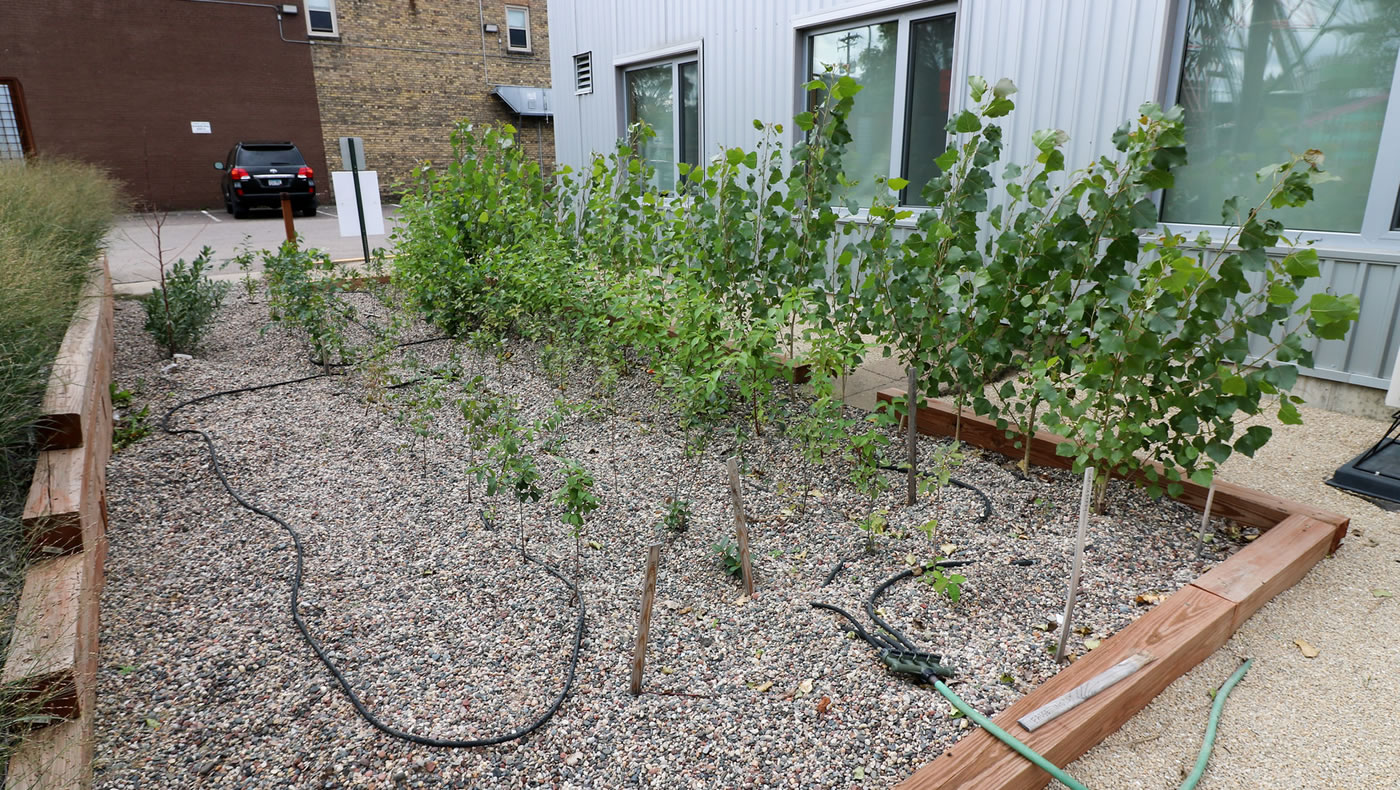
Trees are an important tool for protecting clean water, especially in urban areas. They intercept stormwater, absorb it and filter out the pollutants. They also stabilize soil and reduce erosion. All of this helps to stem the flow of pollution into our waters.
When I started working at the MWMO two years ago, I was thrilled to discover we had a gravel-bed tree nursery in front of our garage. Gravel-bed nurseries are an inexpensive way to grow healthy trees in a small amount of space. Growing trees in a gravel bed rather than soil can result in trees with 200 percent more roots. These extra roots help the trees grow larger in shorter amounts of time. They also make the trees tougher and healthier when planted.
The beauty of gravel bed nurseries lies in their simplicity. With a little pea gravel and a way to water the plants, you can build one virtually anywhere. Our nursery is approximately 400 square feet, and this season we grew over 140 trees and shrubs. In the early spring, I check out bare-root plant sales from our local conservation districts, and cross-reference their lists of tree species with a list of trees recommended for gravel beds by the University of Minnesota. Some species grew dramatically fast over the summer, as you can see in the photos.
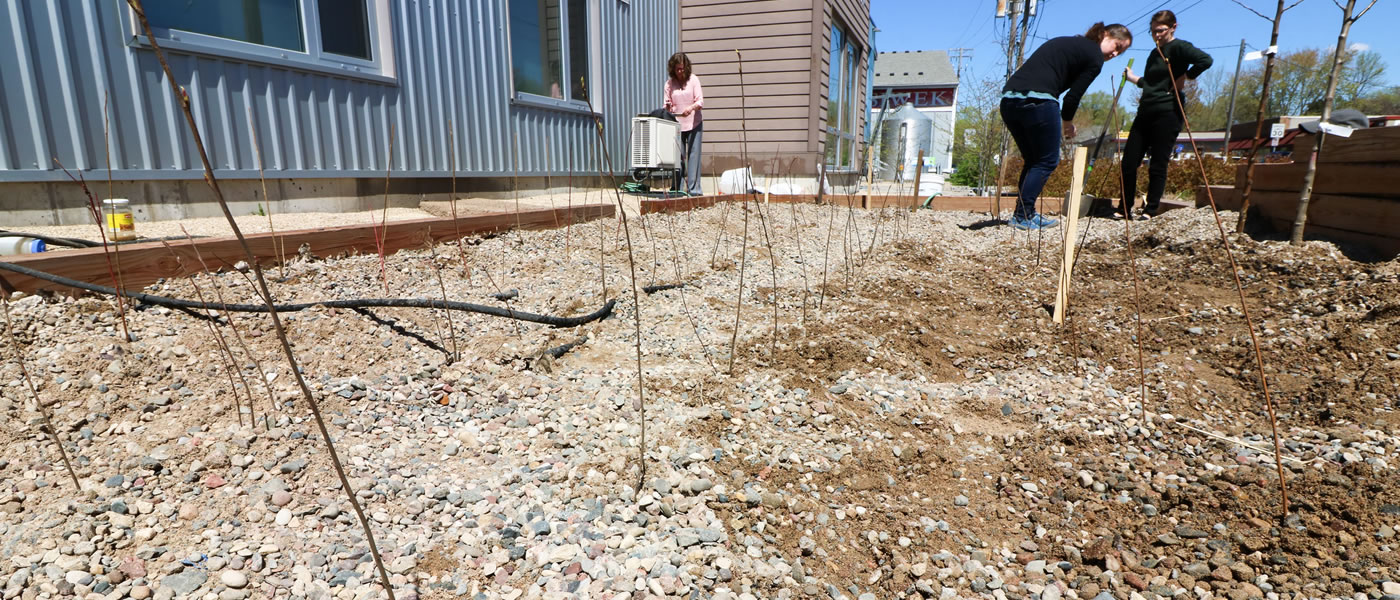
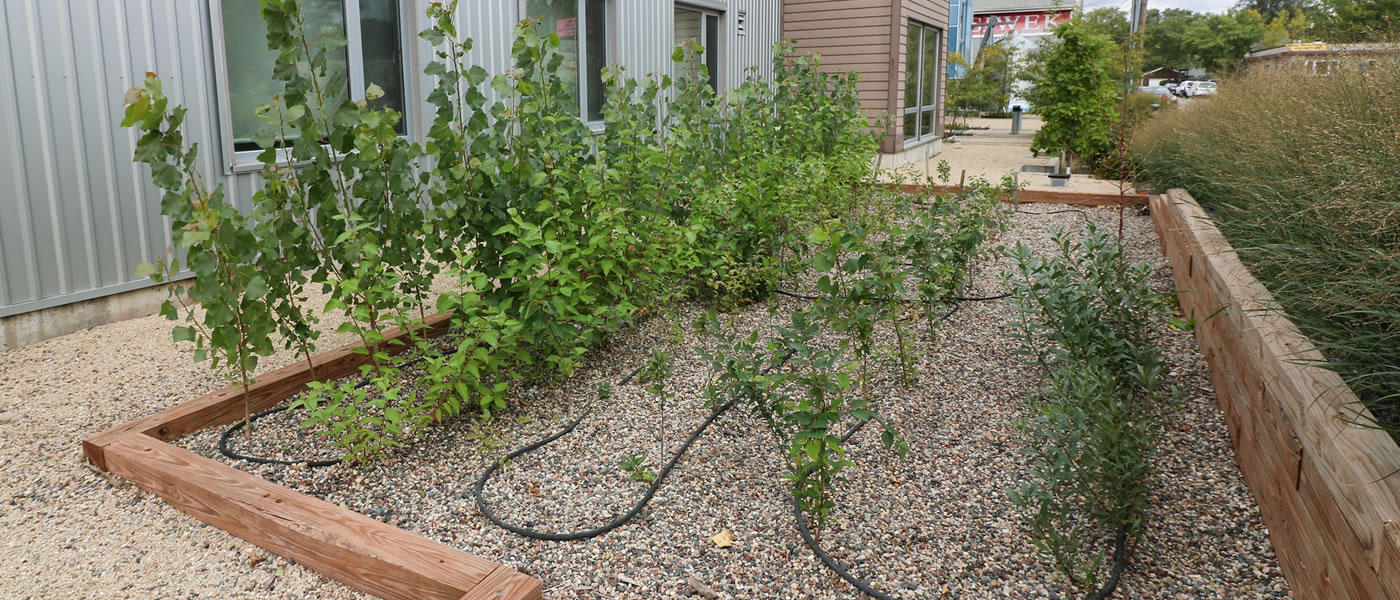
One of the main benefits of using bare-root plants is their low cost. Usually sold in bundles of 10 or 25, you can get great native trees and shrubs for between $1–$2 each! Of course, these are tiny little plants — usually a single stem that’s only about 1–2 feet tall with very little root structure. But that’s where the gravel-bed nursery comes in.
Gravel-bed nursery systems possess a remarkable ability grow healthy, dense fibrous root systems before you move the trees to their permanent home. Why is this important? The more surface area in the root system, the more nutrients the plants can absorb. You’re really giving them a kick-start before you plant them in real soil.
I’m also a fan of bare-root trees because research (see below) shows that even though they might be smaller when they’re planted, the bare root plants can grow faster and healthier because of reduced transplant shock and fewer structural issues from having been grown in a container.
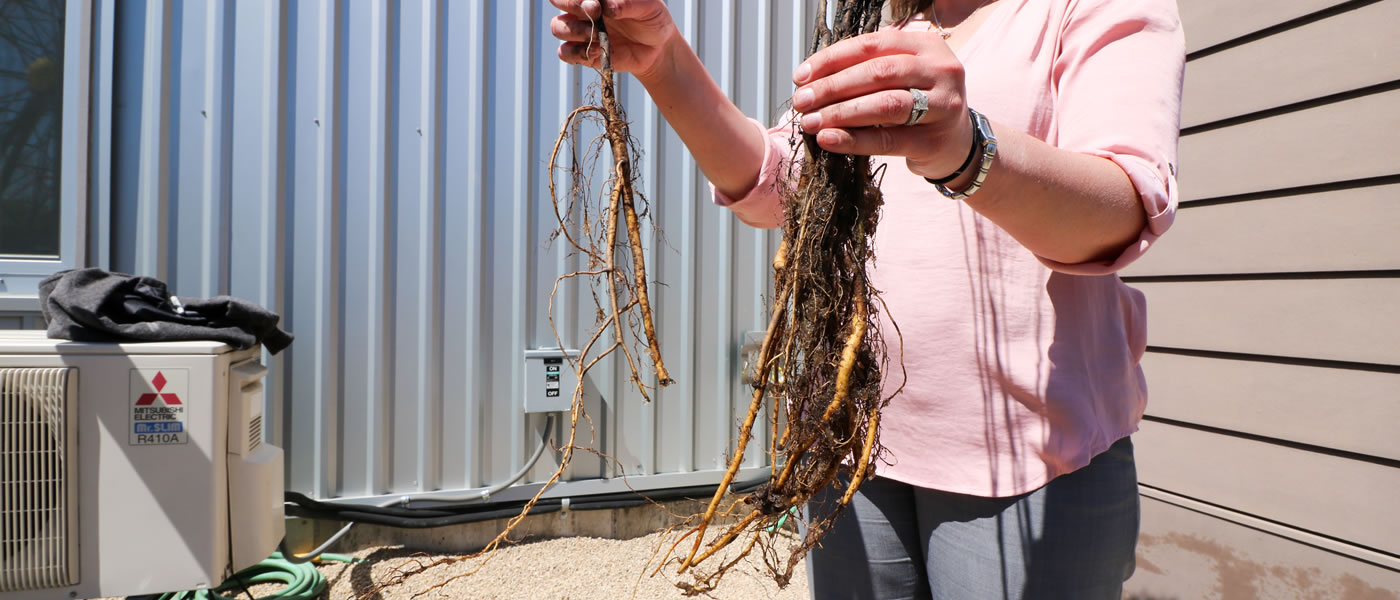
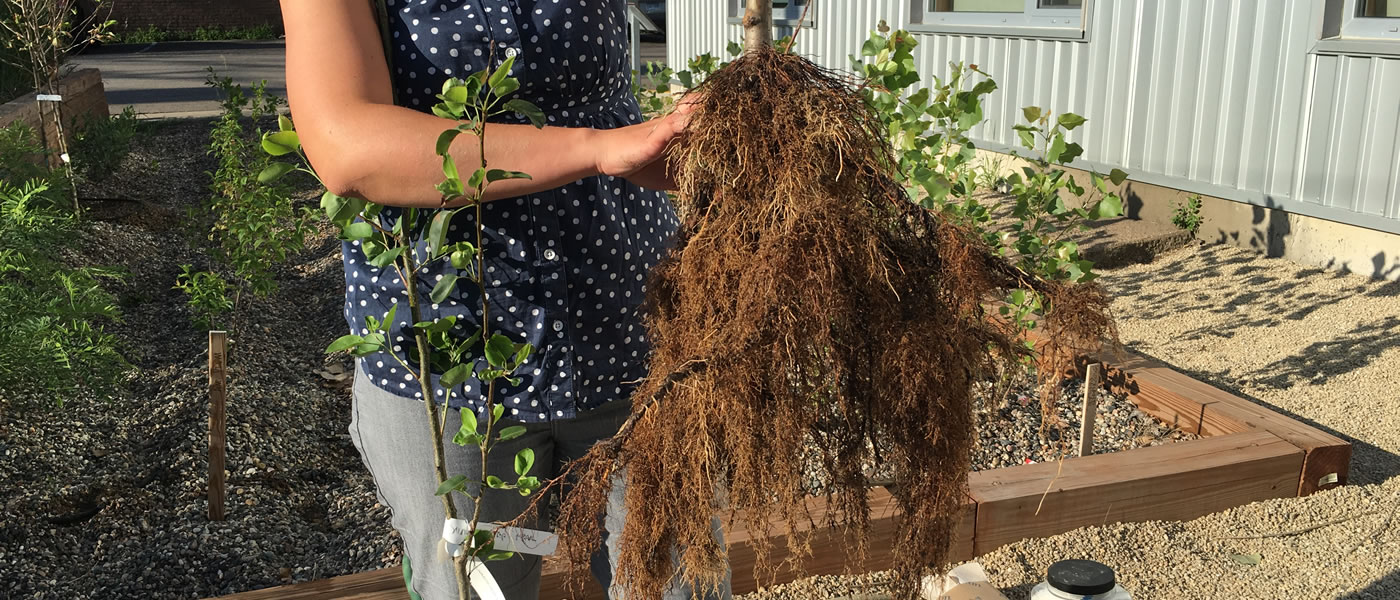
We at the MWMO like native plants, so I’ve been trying to grow species that are native and have wildlife benefits along with a few that are smaller in stature for urban homeowners. A few of the shrubs planted this year were the Red Osier Dogwood, Black Chokeberry, and Sandcherry. I’m very happy with how the Sandcherry has done, as this one wasn’t on the University of Minnesota’s list.
The tall trees shown in the photos are Siouxland Poplars, the only hybrid species I planted. I chose to test out this species because of an interest in Cottonwoods along the river, and this variety has been designed to be seedless. As you can see, these trees grew extremely well in our gravel bed.
Our trees and shrubs will be finding permanent homes soon, and I will gather up information to keep in mind for next season. If you’re in the area of our Stormwater Park and Learning Center, stop by to see the plants or the gravel bed system for yourself.
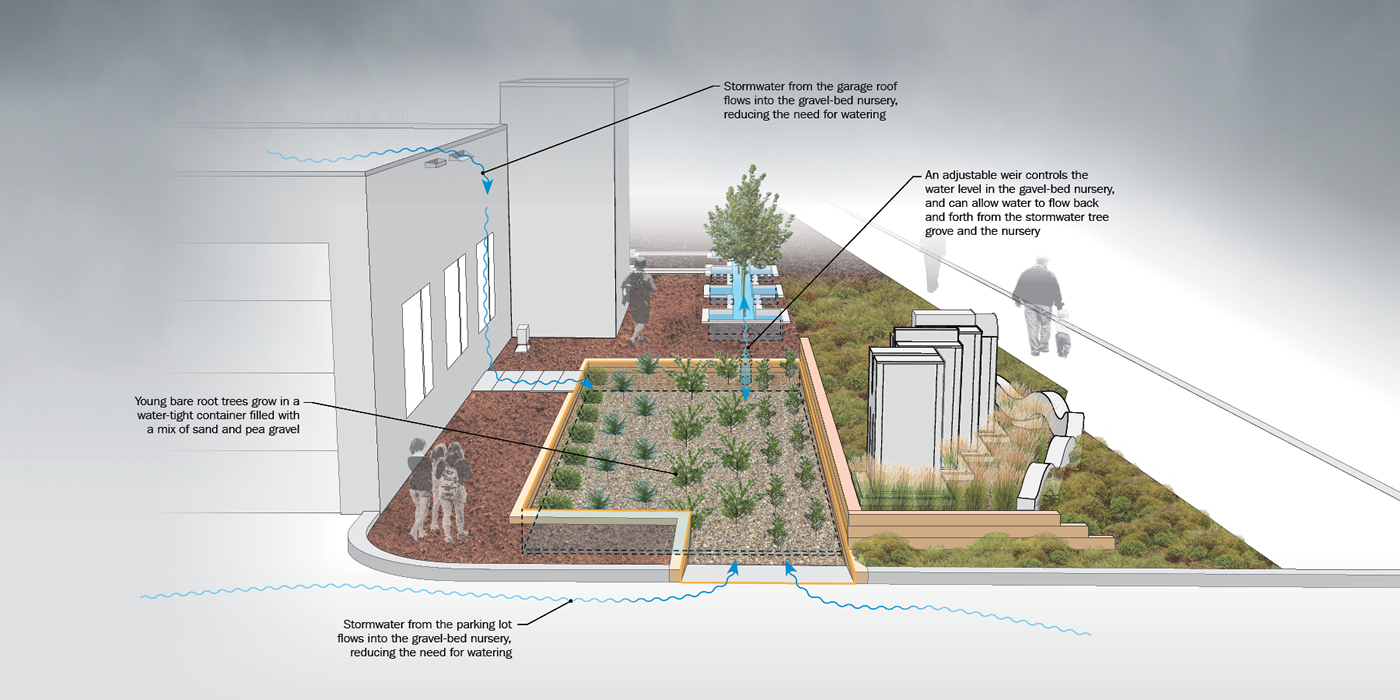
Build Your Own
Here’s a great tool put out by the University of Minnesota’s Department of Forest Resources about how to build your own gravel-bed nursery:
Where to Find Bare-Root Trees
Below are links to a few local conservation districts with bare-root trees and shrubs. Also keep an eye out at your local nursery first thing in the spring!
- Washington Conservation District
- Scott Soil and Water Conservation District
- Anoka Conservation District
Further Research
- Bare Root to Bare Roof — Coming Full Circle — michigan.gov (PDF)
- Influence of Tree Size on Transplant Establishment and Growth — HortTechnology (PDF)
- Caring for New Transplants — The Morton Arboretum
- Community Gravel Beds for Bare-Root Planting (YouTube)


